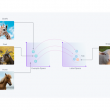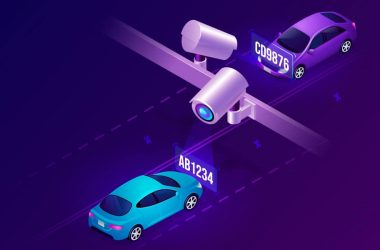Executive Summary:
The potential for computer vision to accelerate the world’s transition to a brighter future makes it one of the most attractive technologies of the twenty-first century.
Computer vision’s technological ecosystem has seen major influxes and outflows, but image segmentation stands out. There are countless uses for image segmentation. Today, everybody working on computer vision projects should be familiar with the fundamentals of picture segmentation.
In this post, we will examine image segmentation in great detail, discuss the two types of segmentations, and discuss the potential differences between semantic and instance segmentation.

What Exactly Is Image Segmentation?
Image segmentation divides visual data into object identification, object recognition, and image categorization. Semantic segmentation, instance segmentation, and panoptic segmentation are three subcategories that can be applied to it. Different methods might not accurately differentiate the items in an image factory.
Kinds Of Image Segmentation
Users must understand which type of segmentation technique best satisfies their needs in light of the rising demand for picture segmentation. In this article, we introduced TWO different types of segmentation techniques along with semantic segmentation vs. instance segmentation. We talked about how to choose the one that would be most useful for model creation and other activities.
Semantic Segmentation
The segmentation process involves creating bounding boxes for each object. We attempt to draw a border around each object and know the pixel-level features. Each pixel is given a name in semantic segmentation, and its appropriate class is determined. Each class can have a different coloring.
Look at the image up top. It contains three objects: sheep, a road, and grass. One color is given to each class. If it comes across a pixel that belongs to the class “grass,” it gives that color green. If it encounters another class, it allocates the appropriate hue.
Semantic Segmentation: How Does It Work?
Semantic segmentation seeks to extract such features before employing characteristics to create different categories in an image. These are the steps involved:
1. Analyse the training set to identify a particular object in the image.
2. Construct a semantic segmentation network to localize the items and create a bounding localized them.
3. By producing a segmentation mask, you may train the semantic segmentation network to classify the pixels in a localized image.
Semantic Segmentation Uses
- X-rays, CT scans, and MRI scans are used in medical diagnostics to look for signs of illness.
- GeoSensing: For analyzing satellite images to map land use and track regions of urbanization and deforestation
- Autonomous driving can precisely identify lanes, pedestrians, traffic signs, the road, the sky, and other moving cars.
Instance Segmentation
Semantic segmentation is one level behind instance segmentation. It tries to segment and show distinct instances of the same class rather than giving all objects in the same class the same pixel values. Instead, each class instance is given an instance ID, and the result is an image with pixel borders separating each item. For instance, if the image has two pens, it would identify them as pen1 and pen2. For instance, segmentation applications include crowd counting, human position estimation, and ship detection. Using mask RCNN, both kinds of segmentation can be carried out.
Instance Segmentation: How Does It Work?
It is challenging to complete instance segmentation since it requires pinpointing pixel-level boundaries for the objects. However, as we previously observed, instance segmentation consists of two key components:
1. Object detection: First, it performs object detection to identify all bounding boxes for each object in the image.
2. Semantic division: It locates each rectangle (bounding box) and then applies a semantic segmentation model to each rectangle.
Applications, for instance, segmentation
Here are a few examples of instance segmentation in practice:
- Healthcare: Used in the medical field to identify and separate tumors from the nuclei in brain MRI imaging.
- Self-Driving Cars: Using dense distance-to-object estimation techniques, these vehicles can estimate the high-resolution 3D depth of a scene from a single pair of 2D photos.
- Robotics: Combined with self-supervised learning, this technology divides visual observations into separate objects by interacting with the surroundings.
Semantic Segmentation vs. Instance Segmentation
Semantic segmentation:
- Before labeling any pixels, targets must first be found.
- Example: All chairs are marked blue because semantic segmentation cannot distinguish between specific examples of the same category.
- It determines which object category each pixel in the given image belongs to, where the model is aware of all object categories and labels.
- Stanford Background Dataset, Microsoft COCO Dataset, MSRC Dataset, KITTI Dataset, and Microsoft AirSim Dataset are a few amazing open-source datasets.
Instance segmentation:
- It combines semantic segmentation and annotation of target detection.
- For example, varying chairs can be identified by their colors thanks to instance segmentation, which can discriminate between various instances of the same categories.
- It recognizes the object instance to which each pixel in the provided image belongs. It distinguishes between two items with the same labels and goes further than semantic segmentation.
- The LiDAR Bonnetal Dataset, HRSID (High-Dimension SAR Images Dataset), SSDD (SAR Ship Detection Dataset), Pascal SBD Dataset, and ISAID (A Large Scale Aerial Images Dataset) are some amazing open-source datasets.
The last say:
The best picture segmentation approach will depend on your application’s requirements. However, semantic segmentation can be your best bet—for example, semantics to group pixels into specific types.
If you need to find individual instances of each class within a picture, instance segmentation can be the better choice. However, panoptic segmentation may be the best option if you must accomplish both goals.
In short, picture segmentation has fundamentally altered how machines see the world and make decisions. New uses for this technology are continually being found while it is still being researched and improved.
Image segmentation will expand possibilities as machine-led artificial intelligence develops further. Hopefully, for instance, semantic segmentation but segmentation is all clear now.










